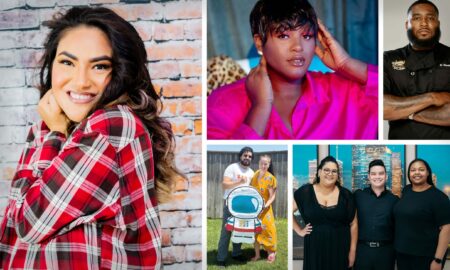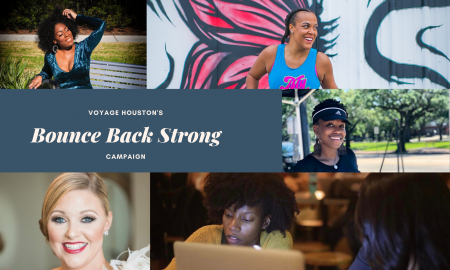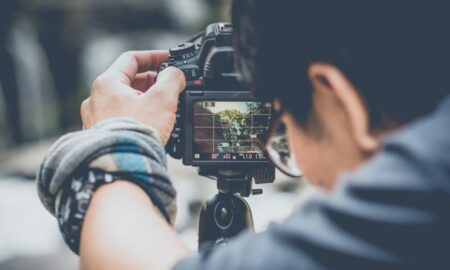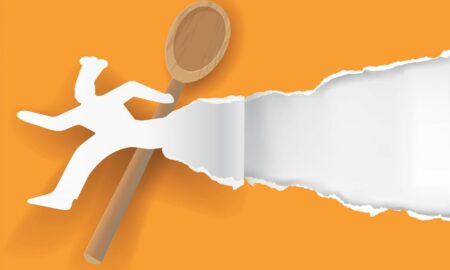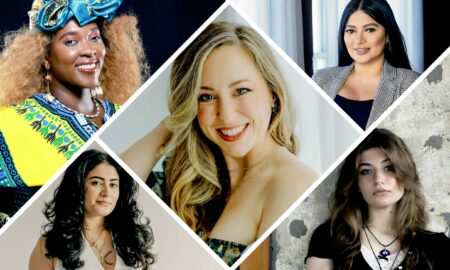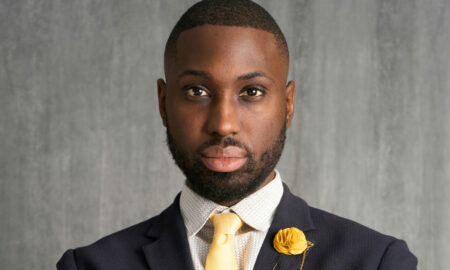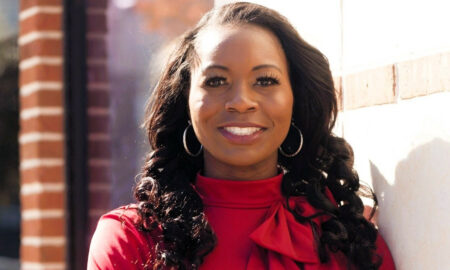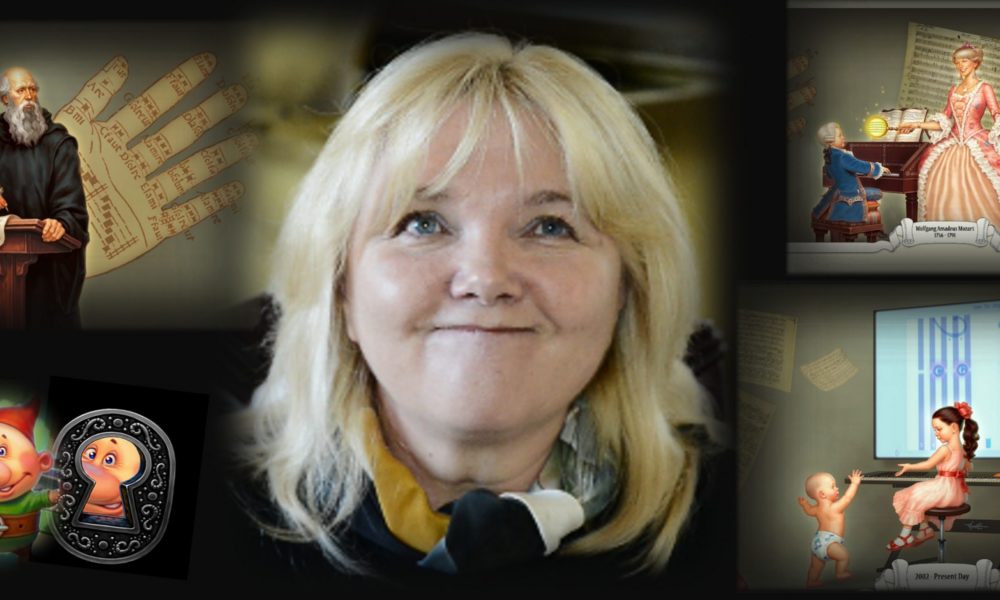

Today we’d like to introduce you to Hellene Hiner.
Hellene, let’s start with your story. We’d love to hear how you got started and how the journey has been so far.
I am an immigrant from the former USSR (Ukraine). When I was 33, I came to this country with $500 in my pocket and no English or business skills. Before arriving, I had never driven a car, and while was waiting for my work permit I volunteered at a daycare center to learn the language and the psychology of toddlers. I came to the USA with the dream of developing a digital, interactive tool for helping people learn to read music.
Music notation is different from the regular text: we read text line by line. In music, our vision has to grasp multiple lines and spaces at once. I experienced this obstacle first- hand as a child and initially thought that my failure to deal with sheet music was due to a “bad teacher.” When I was 11, I quit the piano with the intention of never coming back.
However, it seems like God had a different plan for me. All of sudden, I started to hear the exact pitch of every music sound and became “gifted.” I went back to music classes. Being a gifted child changed the entire situation. Now all of my teachers were “wonderful,” and the learning experience was easy-breezy. When I was 15, I received my first A+ I at the graduation recital. With this remarkable event, my journey of searching began. I wanted to find out why we fail most children in music education. Since I had been able to experience two completely polar learning experiences, I wanted to understand why some students become “stars,” while others do not learn anything in music at all. After all, in public schools, for example, children know the letters and can read texts regardless of their “talent,” but in music, the gap between those who can and those who cannot is huge.
Music for me became like a “third world” country, where we have very rich and very poor students with no “middle class.” I had to graduate from a music college and receive my master’s of arts to be able to study the problem more profoundly. Trying to create different learning aids to help all students learn successfully, I made different assumptions and guesses. I was lucky enough to spend hours and hours with kids of different ages. I was able to relate to kids with inborn talent and with those who had “deaf ears.” Both groups had one thing in common. They were not able to truly see music notation. They stared at keys and notes as we stare at the shelves of spices in a grocery store. Finally, those with musical talent opened their “third eye” and started reading music using their inborn music ear. Sadly, the rest of the students fell off the train of music literacy.
Near the end of the 1980’s, I purchased my first video game: a black and white TV station ping-pong game. The idea that training music should be interactive and visual was born right there! It struck me that learning to play piano and read music is spatial and requires more skills including motor skills and even body awareness. Piano students are like pilots and need a “simulator” to help them to grasp all these “buttons” at once! It was no doubt to me that technology would be the most effective way to combat music “blindness” of kids and help them develop the eye-sight needed for music notation. In Ukraine, I had been making $20 a month. There was no way for me to save enough money to buy a computer. That is exactly why I set the goal to immigrate to the USA and develop the technology component of my new approach of teaching music and piano.
When I came to the US, I was prepared to start with any job to sustain myself, but Providence again favored me: I always ended up with jobs connected with children, music and education. In fact, right after receiving my work permit I opened my first small business company called “Little Mozart.” I traveled from school to school with a couple of keyboards and gave group music lessons. On top of that, I taught semi-private and private lessons in homes. Some daycare-center owners were very serious about music education for the kids — some not. I noticed that the children facilities with owners who cared about music education had more educational tools in general. Many daycares and private school directors shared the belief with me that music makes people smarter, better, more compassionate, more creative and united.
Music literacy helps kids to stay focused, develop their attention span, be on top of many things and treat life like a successful project. The importance of music training grows day by day especially with the growth of Internet communication. Facebook, Instagram, YouTube, Pinterest – you name it – are mostly visual social sites. An over-abundance of visual information is destructive. Music lessons in such a situation are a salvation. In 1999 I read about the “Mozart effect.” It was all over the news! A physicist, Gordon Shaw, from Irvine, California, discovered that students have better scores on tests after listening to Mozart. I immediately traveled to California and met with the scientist.
Gordon was working on his renowned book Keeping Mozart in MIND. He was about to reveal a new discovery: piano lessons develop kids’ mind. After giving a group of 2nd-grade students piano lessons for a year and other groups computer and choir, this scientist found out that “piano kids” have better scores on math and science tests.
Getting to know this great scientist and his work helped me understand that I was on the right path, and whatever happened I should continue my work on building a new system of teaching music. Life in America helped me expand my horizons, learning not only a new language but also a new way of thinking. This country gave me more opportunities to develop my program. In the early 2000s, I was able to start working on software for my training course. I also filed for a patent. Testing the computer version of my system exceeded all expectations.
Children of any age, even two-year-olds, found joy began to read the notes and develop fine motor skills, coordination, piano skills. Learning to play the piano was a pleasure. It was like a fairy tale! The kids were so amazing that they got on the news and a talk show. The most important part for me was that ALL students succeed – not just prodigies. We are all musically inclined. Initially, it was just a hypothesis. Now I know it for sure. The system that I developed received a name “Soft Way to Mozart.” I discovered that in the 18th century a glitch happened with music literacy when the music notation became extremely user unfriendly.
Instead of fixing this glitch and re-thinking the way of teaching music, humanity went after prodigies. Wonder children like Mozart became the goal of music education. You know, watching the media chasing another Mozart made me very sad, because it is alienating normal kids from learning music. Why bother if you are not a Mozart?
Prodigies are also no winners in such a situation: they lose educated listeners, who don’t care any longer. I call on everyone back in Mozart’s time to fix a little misconception and revive classical music for all kids. When they learn how to sight-read and move their fingers, the whole new world of sounds opens to them. They won’t necessarily be piano competition winners, but their life will be so much better and more meaningful!
Today I have created almost everything that was in my plans when I was 15. My company’s name is Music Vision International because we literally help people see music score as they have never seen them before. We teach students, parents and teachers remotely how to learn and to teach using our digital tools. We teach in English, Russian (of course!), Spanish, German, French and Kazakh. My invention was called the “missing visual link in music education” by Yuri Rozum, a renowned Russian pianist. My first theses were published by a famous Moscow conservatory. I am currently writing scientific papers with Herzen University and St Petersburg Conservatory.
My vocational teaching course is provided through the University of Herzen (Russia) We have many teachers here, in the USA that have received my personal training and now teach students using the “Soft Way to Mozart” approach. Sunny Abarbanel from Fresno, CA, for example, has already used the method in her piano studio for 15 years! I am very proud of public schools that use my method in piano labs. Such schools are mostly in California for some reason. What makes this invention different and unique? We have adjusted music notation to the eyes of each learner and developed formats for reading music that gradually becomes more challenging. The analogy of it in reading books: from large print with pictures to novels. We have developed similar formats with interaction. Now the music score is not just adjustable, but also communicative.
After receiving a US patent and experiencing a lot of success with our students (we have piano competition winners in Ukraine, Israel and Spain), I hope to bring this tool to as many schools, daycare centers and homes as possible. We have also had amazing success teaching kids with special needs! Elderly people can restore fine motor skills and coordination with this tool. There is so much we can do for every individual! The goal of learning music should not be to stick out from the crowd. Music is a loving tool for all of us to have a happier, more meaningful life and to be more creative and compassionate at the same time. I think today is the best time to reboot true music literacy everywhere. We will all benefit from that!
We’re always bombarded by how great it is to pursue your passion, etc – but we’ve spoken with enough people to know that it’s not always easy. Overall, would you say things have been easy for you?
The road was as bumpy as it could be. Immigration struggles, poverty. When I was trying to buy my first piano keyboard ($150), I didn’t have that much cash and applied for the store credit. Since I didn’t have any credit history my application was rejected. Language. Being not a native English speaker it was very hard for me to bring my message across. It takes a lot of time and struggles to create simple slogans or short articles. However, I always have plenty of very bright and talented people that help me with proofreading and such.
I have to change the mindset of people who thinks that reading music score is not something truly important in learning music. This is the biggest challenge, even though my discovery and findings are endorsed by academic science, the industry pretends that this is not exist and unwilling to make changes. The market economy in this regard hinders the scientific development of music and prevents millions of children from receiving a valuable education.
We’d love to hear more about your business.
We discovered and brought to life the most powerful fact about music education: music sounds, their duration and graphic images (notes) have a common ground which is an X intersection. The “Soft Way to Mozart” Academy combines different forms of spatial expression of music into a single whole and revolutionizes music education worldwide. Upon this discovery, we built a new system of teaching music, new curriculum, new teaching materials and new science of building music skills.
Only with the Hiner method we now able to measure the learning results and understand how the music skills are built. Hiner’s finding and research papers are published by the most notable and significant journals covered by Science Citation Index. “Science begins as soon as we can measure,” D.Mendeleev once stated. “Soft Way to Mozart” is the only program in the world that measures every step of beginner’s development and gives us precise figures about music literacy skill development.
What quality or characteristic do you feel is most important to your success?
Aim. stubbornness, ability to focus.
Pricing:
- cost of learning in Academy for the entire family is about $25-$30 a month which is way less than regular provateleaaons per one child
Contact Info:
- Address: Hellene Hiner 15131
New Hastings Dr. Houston TX 77095 - Website: softmozart.com
- Phone: 713-443-8984
- Email: admin@softmozart.com








 Image Credit:
Image Credit:
Herzen University (Russia), Madina Sankibayeva (Kazakhstan), Tom Donahue (USA), Goh Khee Meng (Singapore)
Getting in touch: VoyageHouston is built on recommendations from the community; it’s how we uncover hidden gems, so if you know someone who deserves recognition please let us know here.

